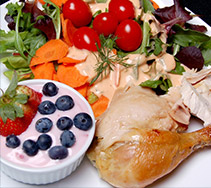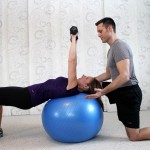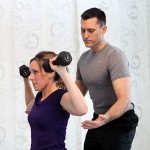Physical fitness has been defined in many ways. I believe that physical fitness can be defined as one’s ability to carry out day-to-day activities without physical exhaustion and injuries and to maintain high levels of energy to accomplish daily tasks. I know that by the end of my 11 to 12 hour work day and after training 10 to 12 clients I am extremely tired and my energy levels have diminished. However, at the end of the day, I still feel capable to play with my sons, read books with my youngest, and help Stacie tuck the boys into bed. As my clientele base has steadily grown and my business demands more hours than I’m humanly capable, I’ve found myself losing time to work-out and less inclined to keep myself in shape. Sometimes I think some of my clients are in better shape than me. These clients have regularly set time aside in their busy schedules to train wit h me or on their own. That’s what it comes down to, time.
h me or on their own. That’s what it comes down to, time.
We must set aside the time to exercise or incorporate physical activities into our daily routine in order to improve our physical fitness levels and be healthy. I’ve found that even a little bit of time devoted to a light work-out or high intensity work-out helps to keep me healthy and at a high level of physical fitness. Setting aside 15 minutes in the morning to walk outside or on a treadmill is certainly a good way to increase your physical fitness levels. I recommend this to a long-time client of mine at least every other week. He routinely asks, “Is that enough?’ My response is always, “YES! Fifteen minutes is better than doing nothing at all.” Studies have shown that small bouts of cardiovascular exercise, such as walking, can decrease blood pressure, reduce your risk of strokes and heart disease, and pro-long life (along with several other positive changes).
Our lives have become overwhelmed with work, school, family, social events, and sports for the kids. Finding the time to take care of my health is a major priority in my life. It should be for you as well. So, make time in your busy lives to exercise daily, even if it’s for just a little bit, 15 minutes, even 10 minutes. A little bit adds up to be a lot in the long run. That little bit of time spent getting your heart rate up will help to increase your energy levels, lift your mood, and, overtime, will increase your physical fitness level. Make your health a priority and get moving. Find the time!





